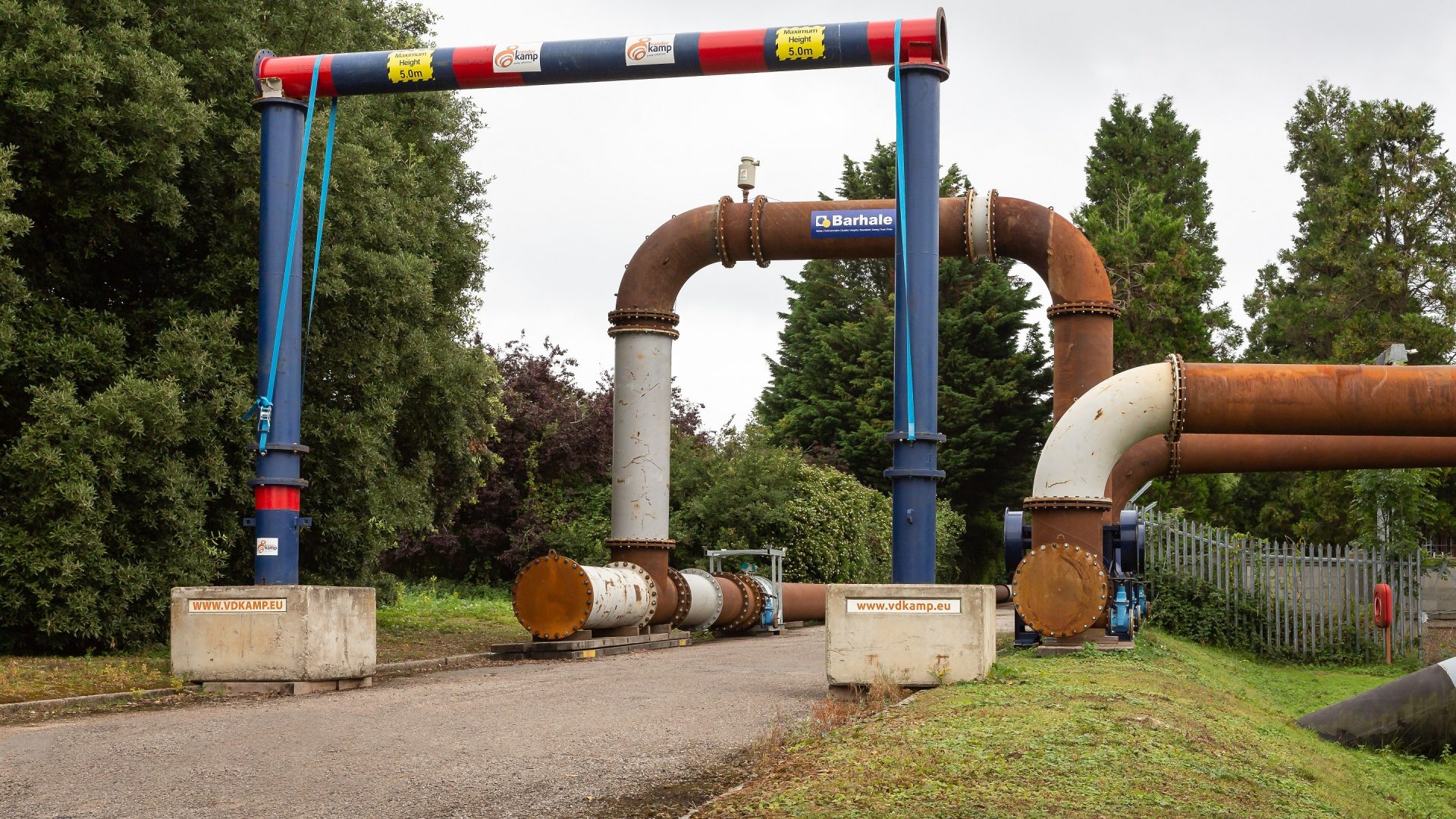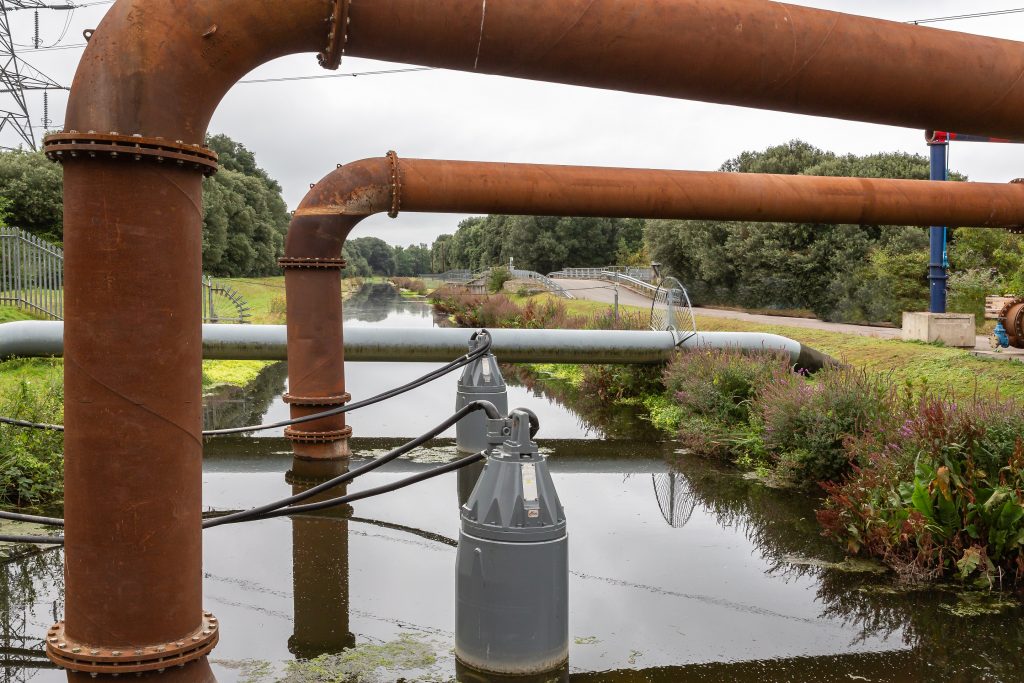During the summer of 2021, the Queen Elizabeth (QEII) Reservoir in South West London was drained so that refurbishment work could be carried out on two feeder tunnels.
During this period, it was imperative water levels in the reservoir could be topped up as required with raw water from the River Thames, but during dry spells there were daily restrictions on how much water could be drawn from the river, and the pumping station pumps were not able to effectively operate when drawing flows below 2,500 litres per second (LPS).
A temporary pumping solution was required to operate these low flows, although in temporary pumping terms, 2,500 LPS is a significant flow to handle.
One of the challenges to overcome was that the over-pumping requirement had to manage flows of up to 2,500 litres per second with a static head of 25m and the temporary pumping solution outlet had to connect to a very old pipeline (constructed circa 1948). The critical nature of the work also meant that Vanderkamp had to be able to initiate the pumps and maintain the required flows 24/7.
During the duration of the project, the pumping station was also undergoing a major refurbishment so works could not impact construction traffic. Other logistical challenges included navigating around overhead power cables, a gas main, crossing a service road, and that the weight of the pumps required, together with the attached 800mm discharge pipework, was 17 Tonnes.
Utilising a 155 Tonne crane, Vanderkamp installed 2 x Flygt C3800 500KW submersible pumps. Each of the pumps was capable of supporting the maximum pumping requirement of 2,500 LPS, but due to the critical nature of the work, it was imperative to have a duty standby, and typically even when supporting lower flows, it is more efficient (from a fuel consumption and pump efficiency perspective) to run both pumps simultaneously at any level.
800mm steel pipework was used over a distance of 150m, with a 5m high pipe bridge constructed to navigate the road, and a custom-built flange adaptor was made to connect the temporary pipework to the outlet in the old existing pipework.
An auxiliary 415v power feed was taken from the pumping station to operate the Programmable Logic Controller (PLC), which had to run over a 5m high cable bridge. The PLC controls the 24/7 management of the pumps and provides a link between them and a remote cloud-based monitoring system. Power to the pumps was supplied by 2 x 500 KVA generators, which were only in operation as and when pumping operations were required.
After an initial two week installation period, the temporary pumping solution was operational over a seven month period.
During this time, by utilising a smart proprietary monitoring system via the PLC, Vanderkamp was able to give 24/7 support to the pumping station. With the ability to control the pumps remotely using a phone app, the company was able to initiate and control pumping as the requirements dictated, thus reducing running times, which led to considerable fuel savings.
“This type of project perfectly suited our in-house temporary pumping experts. As a company we aim to deliver end to end solutions, with fully engineered design along with delivery and ongoing maintenance.” said Ron Bryant, Vanderkamp’s UK Managing Director.




